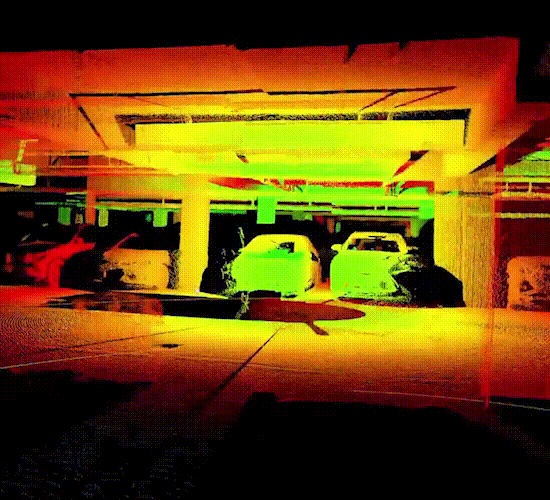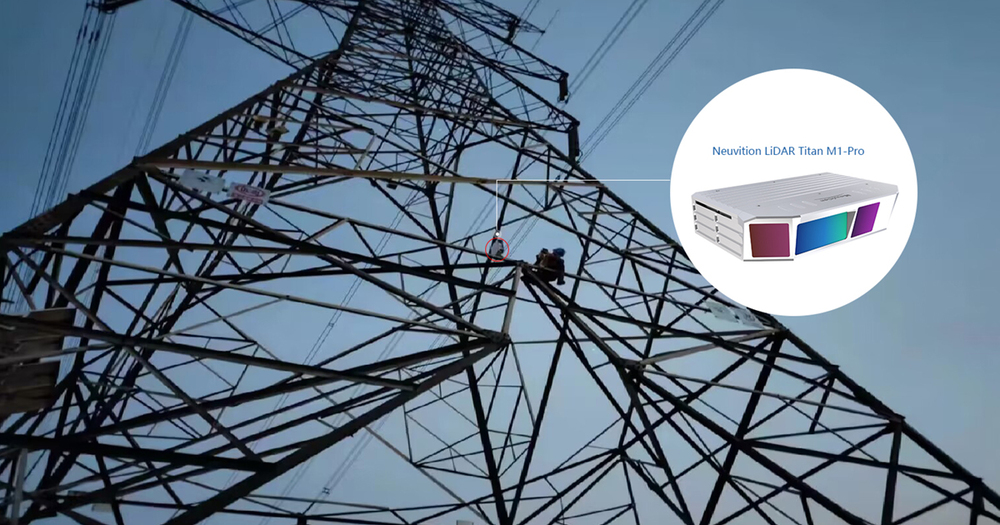LiDAR And Predictive Maintenance: Optimizing Asset Performance In Smart Industry
Author: Release time:2023-12-11 09:15:10
In today’s smart industry, optimizing asset performance is crucial for businesses to stay competitive. One of the key technologies that can help achieve this goal is LiDAR (Light Detection and Ranging). LiDAR enables accurate and detailed 3D mapping of assets, allowing for effective predictive maintenance strategies. In this blog post, we will explore how LiDAR can be used with predictive maintenance techniques to optimize asset performance.
The Role of Predictive Maintenance
Predictive maintenance involves using data analysis techniques to predict when equipment failure is likely to occur so that maintenance activities can be scheduled proactively. This approach helps prevent unexpected breakdowns, reduces downtime, and extends the lifespan of assets.
By combining LiDAR technology with predictive maintenance strategies, businesses can gain valuable insights into their assets’ condition in real time. This allows them to identify potential issues before they become critical problems.
How LiDAR Enhances Predictive Maintenance
1. Accurate Asset Condition Monitoring: Traditional methods of monitoring asset conditions often rely on manual inspections or periodic measurements. These approaches are time-consuming, prone to human error, and may not capture subtle changes in asset condition over time. With LiDAR technology, assets can be continuously monitored remotely with high precision. The detailed 3D point cloud data generated by LiDAR allows for accurate assessment of asset conditions such as wear patterns or structural deformations.

2. Early Detection of Anomalies: By comparing current scans with previous ones stored in a database, LiDAR can detect even minor changes in asset conditions. These changes may indicate the early stages of equipment degradation or potential failures. By identifying anomalies early, maintenance teams can take proactive measures to prevent further deterioration and avoid costly breakdowns.
3. Asset Performance Analysis: LiDAR data can be used to analyze asset performance over time. By tracking parameters such as vibration patterns or thermal signatures, businesses can identify trends that may indicate impending failures. This information enables maintenance teams to schedule interventions based on actual asset performance rather than relying on fixed maintenance schedules.
4. Optimal Maintenance Planning: The combination of LiDAR and predictive analytics allows for more accurate planning of maintenance activities. Instead of performing routine inspections or replacing parts based on predefined schedules, businesses can prioritize maintenance efforts based on assets’ actual condition and performance. This approach minimizes unnecessary downtime and reduces costs associated with reactive repairs.
5. Remote Monitoring in Hazardous Environments: Some assets are located in hazardous environments where human access is limited or dangerous. In such cases, LiDAR technology provides a safe and efficient way to monitor asset conditions remotely without exposing personnel to risks.
How To Implement LiDAR-Based Predictive Maintenance
1. Asset Inspection Using Mobile LiDAR Systems:
Mobile LiDAR systems mounted on vehicles or drones provide a cost-effective way to inspect large areas quickly. These systems capture high-density point cloud data along with geospatial information such as GPS coordinates.
To implement mobile LiDAR-based predictive maintenance:
a) Define inspection routes: Identify areas where assets need regular inspection based on historical failure patterns or criticality.
b) Collect baseline data: Conduct initial inspections using mobile LiDAR systems to establish a baseline for asset conditions.
c) Regular inspections: Schedule periodic inspections using mobile LiDAR systems to capture updated data and identify any changes or anomalies.
2. Real-Time Monitoring Using Fixed LiDAR Systems:
Fixed LiDAR systems can be installed in strategic locations to continuously monitor assets and detect any deviations from normal operating conditions. These systems provide real-time data that can be analyzed to predict potential failures.
To implement fixed LiDAR-based predictive maintenance:
a) Identify critical assets: Determine which assets require continuous monitoring based on their importance to operations or historical failure rates.
b) Install fixed LiDAR systems: Position the sensors strategically to cover the critical areas of the asset.
c) Data analysis: Develop algorithms or use machine learning techniques to analyze the real-time data and identify patterns indicative of potential failures.
d) Alert system: Set up an alert system that notifies maintenance teams when abnormal behavior is detected, allowing them to take proactive action.
3. Integration with IoT Sensors:
Integrating LiDAR technology with IoT sensors enhances predictive maintenance capabilities by providing additional contextual information about asset performance. For example, temperature, vibration, or humidity sensors can be combined with LiDAR data for more accurate predictions.
To integrate IoT sensors with LiDAR-based predictive maintenance:
a) Identify relevant sensor types: Determine which IoT sensors are most suitable for capturing additional asset performance data based on specific requirements.
b) Sensor placement: Install the selected sensors in appropriate locations on the asset.
c) Data fusion and analysis: Combine sensor data with LiDAR point cloud data using advanced analytics techniques such as machine learning algorithms for more accurate predictions.

d) Maintenance actions based on insights: Use the integrated sensor-LiDAR system’s output to trigger appropriate maintenance actions when necessary.
Benefits of Using LiDAR-Based Predictive Maintenance
1. Early detection of anomalies:
LiDAR technology enables early detection of anomalies by providing highly accurate and detailed data about asset conditions. This allows maintenance teams to identify potential issues before they escalate into major problems.
2. Improved asset lifespan:
By proactively addressing maintenance needs based on LiDAR data, businesses can extend the lifespan of their assets. Regular inspections and real-time monitoring help identify wear and tear, allowing for timely repairs or replacements.
3. Reduced downtime:
Predictive maintenance strategies enabled by LiDAR technology minimize unexpected breakdowns, reducing downtime and associated costs. By scheduling maintenance activities in advance, businesses can ensure that assets are always operating at peak performance.
4. Cost savings:
LiDAR-based predictive maintenance helps optimize resource allocation by focusing efforts on critical areas that require immediate attention. This targeted approach reduces unnecessary inspections or repairs, resulting in cost savings for the business.
To implement a successful LiDAR-based predictive maintenance strategy, businesses should consider the following steps:
1. Identify Critical Assets: Determine which assets have the highest impact on operations if they were to fail unexpectedly.
2. Deploy Appropriate LiDAR Systems: Select the right type of LiDAR system based on factors such as range, accuracy requirements, environmental conditions (indoor/outdoor), and budget constraints.

3. Establish Baseline Data: Conduct initial scans using LiDAR technology to establish baseline data for each asset’s condition.
4. Develop Anomaly Detection Algorithms: Use machine learning algorithms or other data analysis techniques to compare current scans with baseline data and identify anomalies indicating potential issues.
5. Integrate with Predictive Analytics: Combine LiDAR data with other relevant data sources, such as equipment sensor data or maintenance records, to develop predictive models that can forecast asset failures.
6. Define Maintenance Triggers: Set thresholds for anomaly detection algorithms to trigger maintenance actions based on the severity of detected anomalies.
7. Schedule Proactive Maintenance: Plan and schedule maintenance activities based on the insights provided by LiDAR and predictive analytics. Prioritize interventions based on asset criticality and predicted failure probabilities.
8. Continuously Monitor Asset Performance: Regularly scan assets using LiDAR technology to monitor their condition over time and update baseline data as necessary.
Conclusion
LiDAR technology offers immense potential for optimizing asset performance in smart industry environments through predictive maintenance strategies. By implementing mobile and fixed LiDAR systems along with IoT sensor integration, businesses can gain valuable insights into their assets’ condition in real time. Early detection of anomalies, improved asset lifespan, reduced downtime, and cost savings are some of the key benefits of using LiDAR-based predictive maintenance techniques.
As the smart industry continues to evolve rapidly, leveraging advanced technologies like LiDAR will become increasingly important for businesses looking to stay ahead of the competition while maximizing operational efficiency and minimizing costs.